data poltergeist*

Fig. #01. Possession of the projection space of Manifattura Tabacchi through changes of lights, sound inputs and ambient fog — Firenze, 2022.
The imprints left by infrastructures of telematic processing - together with their social, economic and political implications - are poured into our present through the universe of data and their (non) manifestation. This world with which we all interact every day and to which we are inevitably connected is, in itself, imperceptible. However, it permeates and fills the reality in which we live. The indefinite and growing quantity of information stored across the endless and aseptic landscapes of Data Centers is, in fact, intangible: that is, it occupies an improper and unstable dimension, compared to that of human perception.
It is no coincidence that these "cities of data" recall the archetypal configuration of cemeterial architecture: colonies of codes and programs become digital epitaphs imprinted in the memory of countless hardware units, arranged in matrices as if they were the loculi of a columbarium.
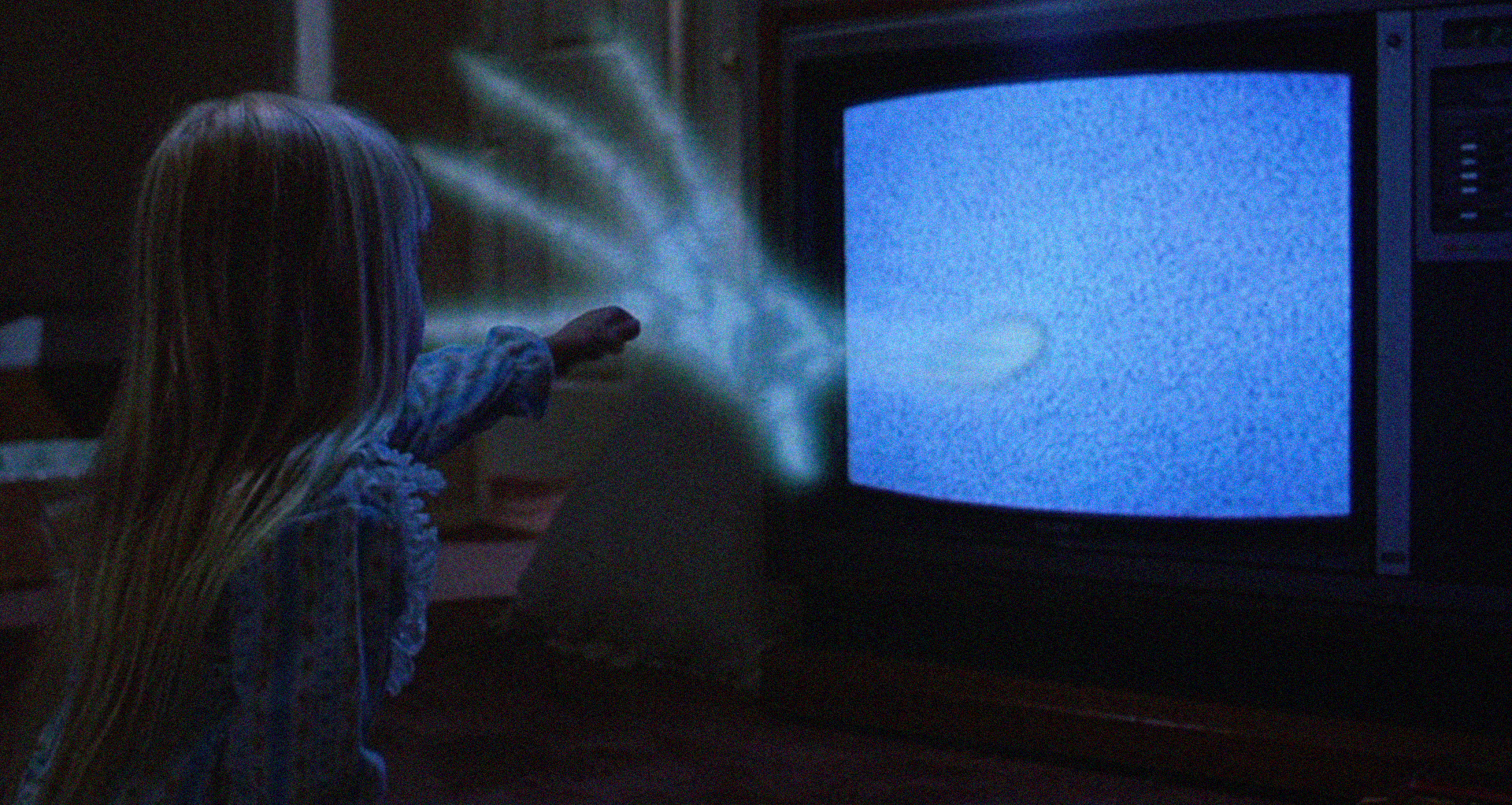
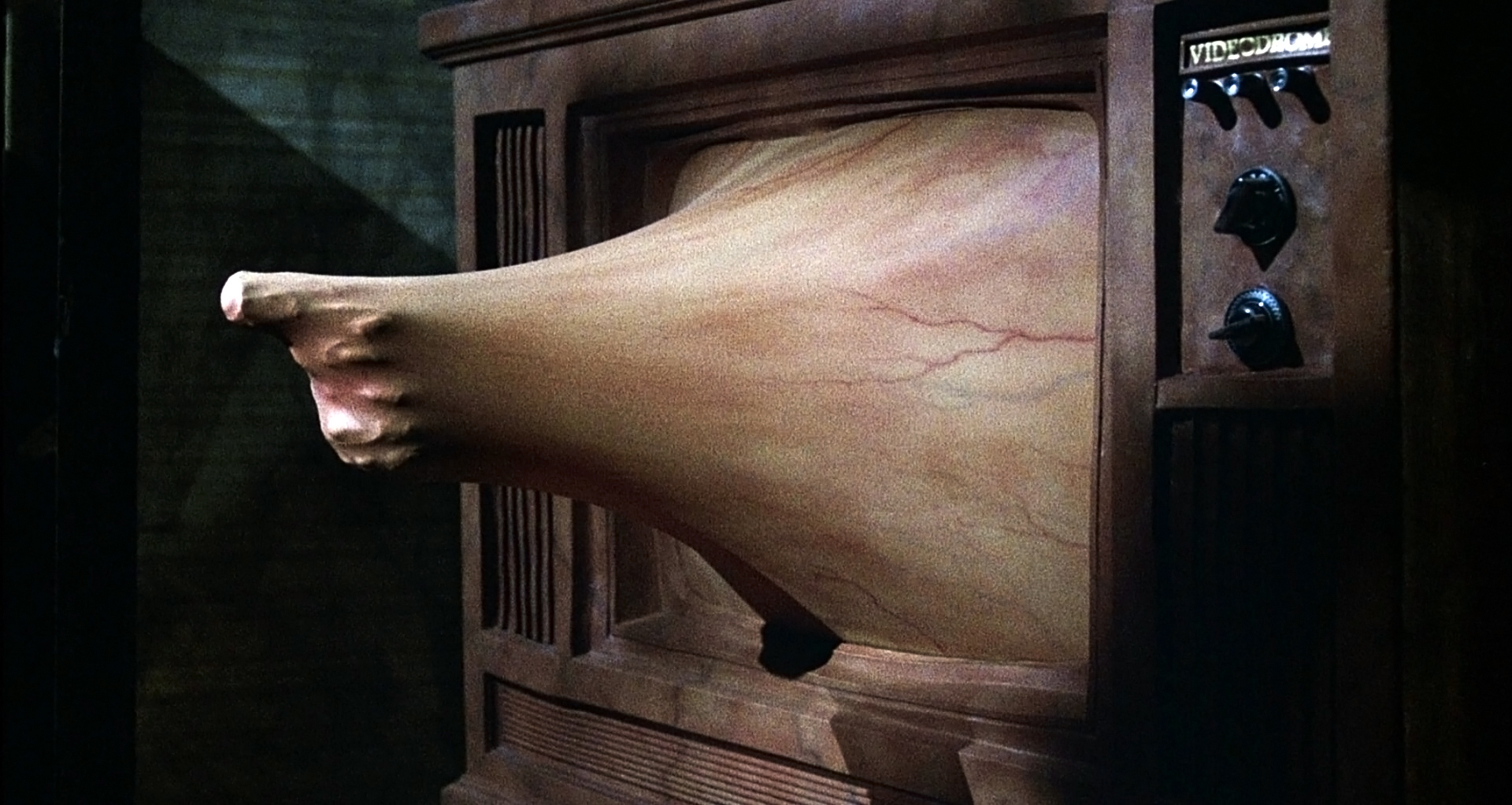
Ontologically, the very nature of such information is indeed an allegory of the spectral dimension: ethereal yet immanent, intangible yet haunting, invisible and silent — just like ghosts, data exist in an ephemeral oblivion, a telematic ‘afterlife’ still physically inaccessible to human beings. In this scenario, the 'Data Poltergeist' (comp. of 'poltern' «make noise», and 'Geist' «spirit») represents the inexplicable and sudden manifestation of the magnetic memory of ELEA 9003's mainframe. It opens a rift between the physical and spectral planes of data layered in the machine's solid-state drives. Just like a spirit is summoned through the crystal ball of a medium, so creeps the phantom of the mainframe into the landscape of an enclosed space through the ethereal performance of its data.

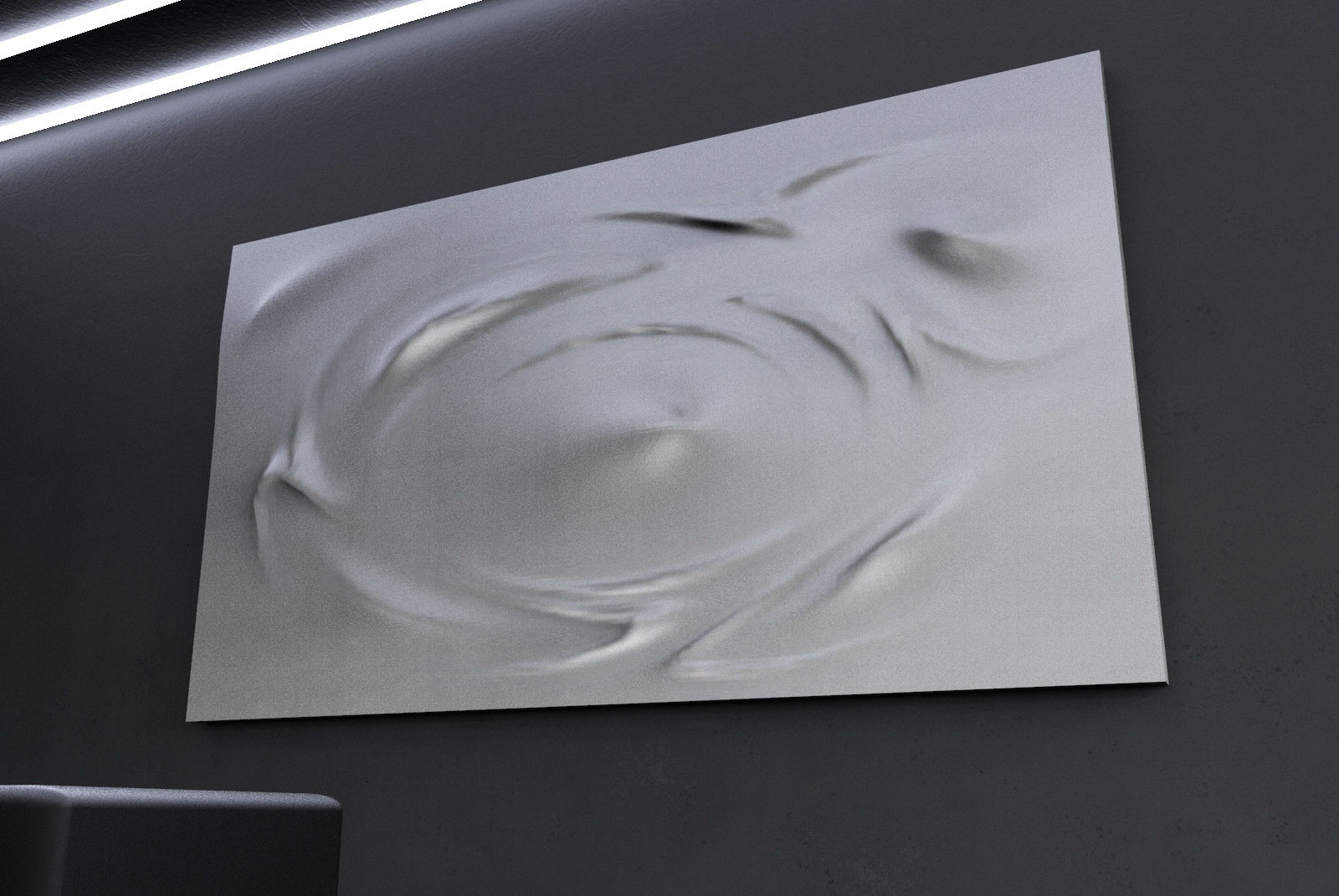
Fig. #04-05. Hypothetical visualization of ELEA 9003’s glitch interaction interfering with the video projection / Concept for a projection screen that can move and alter its shape according to given coded prompts and engines — Firenze, 2022.
Data Poltergeist is an experimental (and to this day unbuilt) installation designed together with Sintetico (Marco Calzolari) for the open call ‘SUPERBLAST II’ by Manifattura Tabacchi. The installation was designed to let visitors experience ELEA’s memories, while the computer remained in a hypnagogic state - between sleep and wakefulness - in the basement of the institute in Bibbiena.
The proposal consisted of a video documenting the parallel narration of mainframes, cemeteries and data centers, to be projected onto the surface of a screen which changed shape according to remote inputs coming from ELEA's spectral memory. The "poltergeist" randomly animated the projection by showing us the images it wanted and distorting them, interfering with the screen and with the space and by reproducing sinister electronic groaning, thus making itself experienceable.
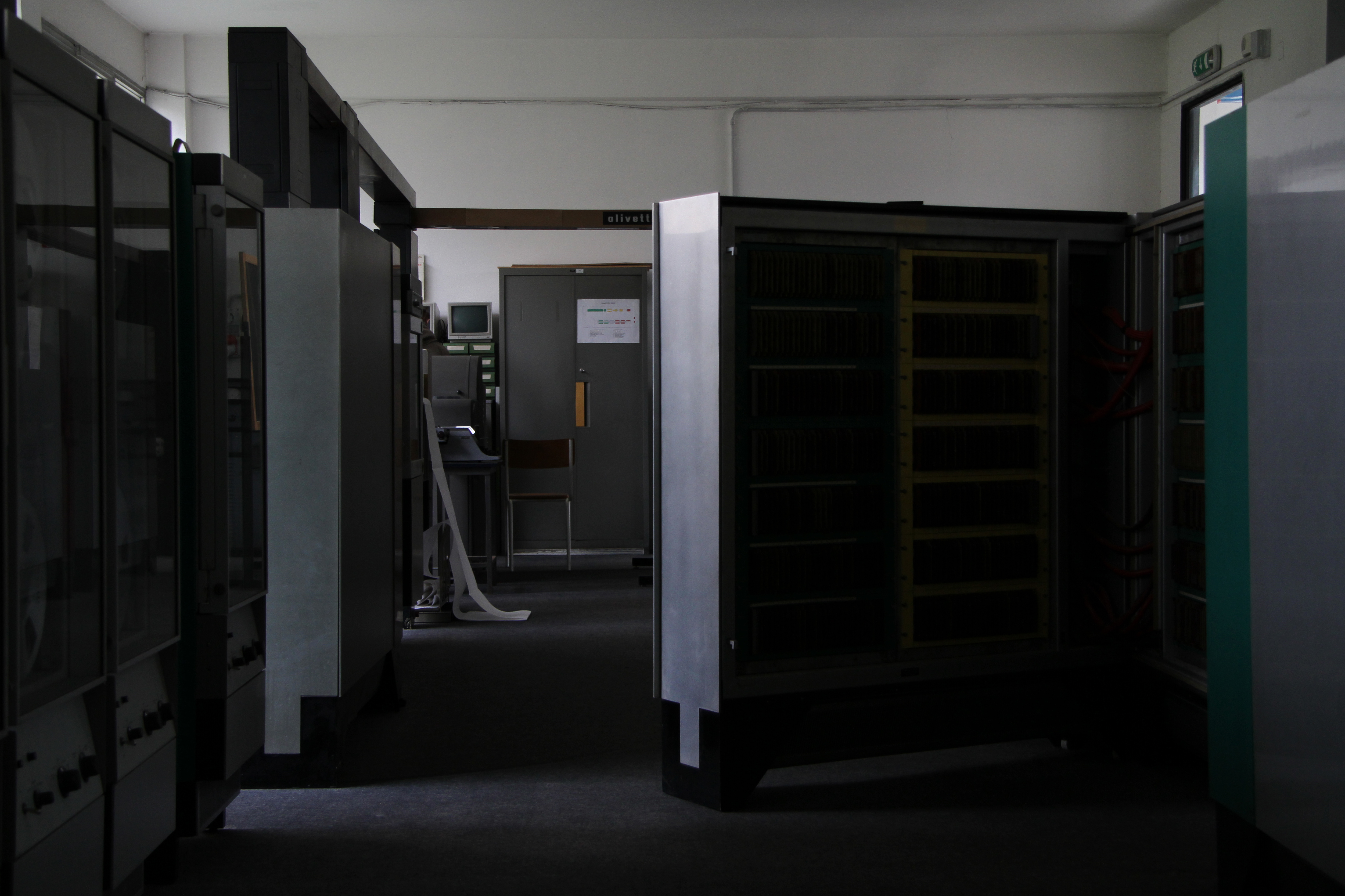
Fig. #06. View of the liminal space preserved in a basement room of the ISIS Enrico Fermi in Bibbiena, bounded by the presence of the phantom mainframe lying asleep (2022).
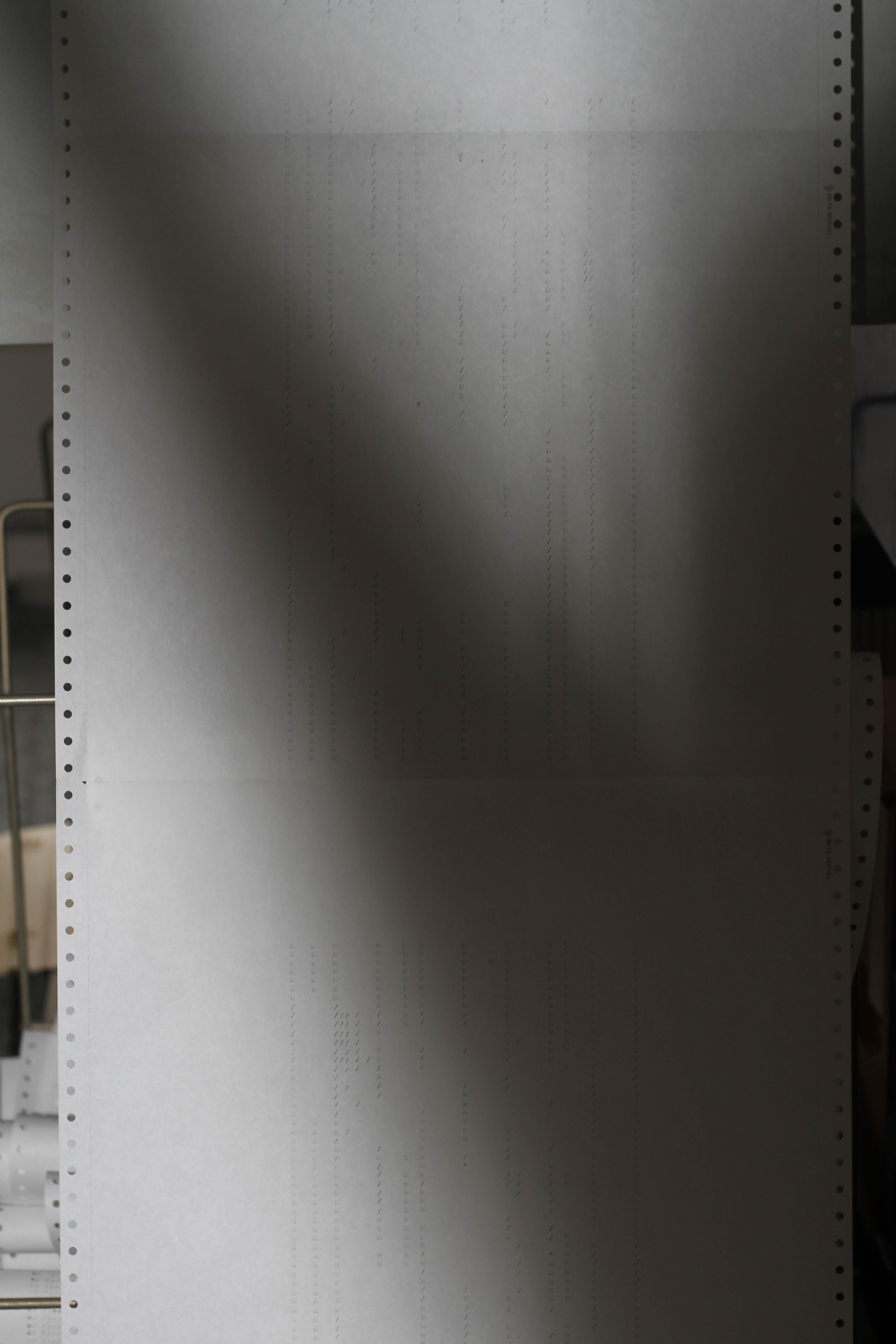
Fig. #07-09. Stills from VISCERA MACHINAE, a photographic visual essay that aims to document the catatonic condition of the computer through silent and visceral shots: an operation similar to surgical dissection carried out on an electronic agglomeration: a phantom, yet still alive — Bibbiena, 2022.
